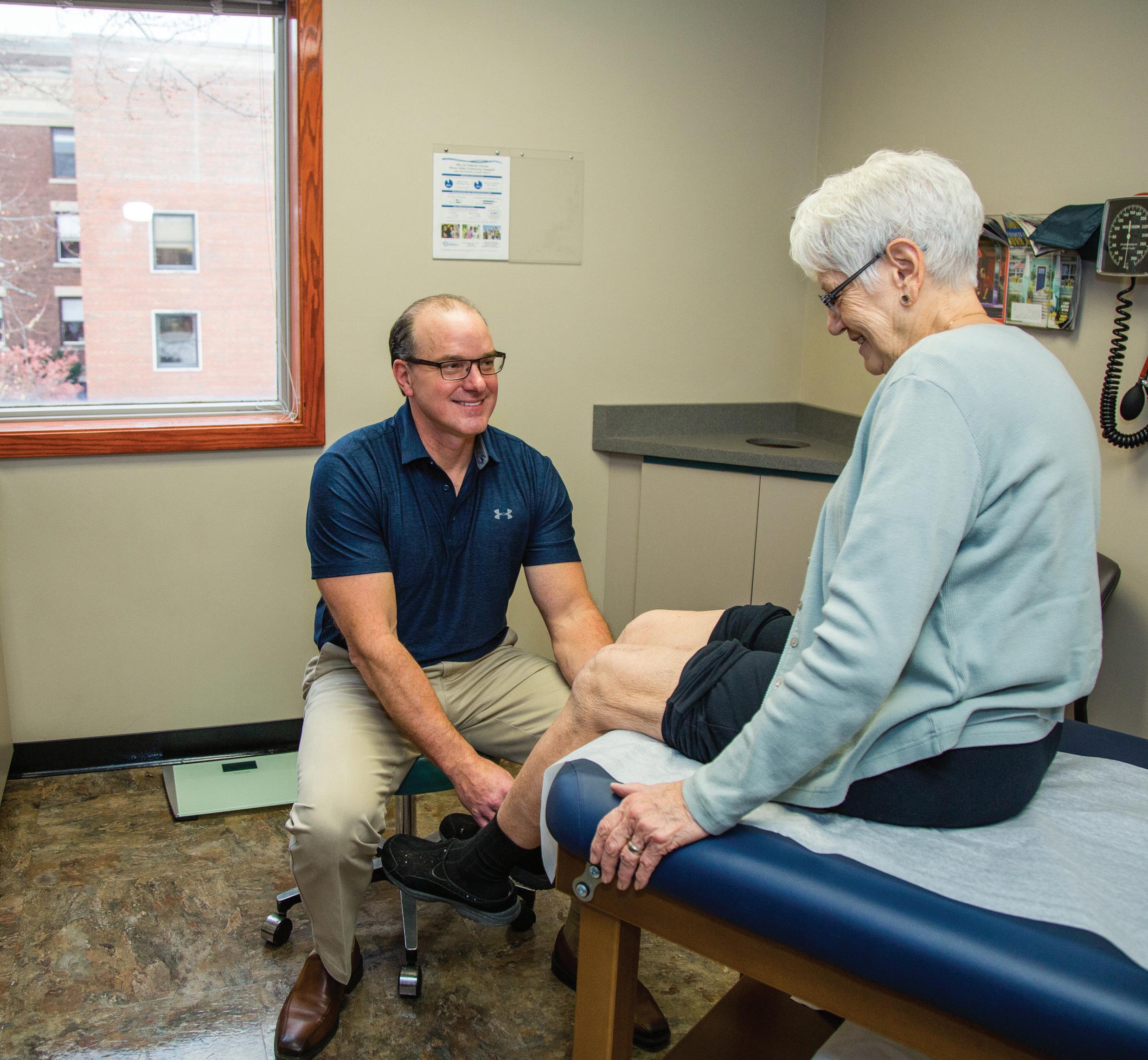
2 minute read
How to avoid knee surgery
from How to Guide_062720
by Shaw Media
The rise in osteoarthritis among Americans leads many of them to consider surgery for knee replacement. Fortunately, going under the knife should no longer be the first thought for those in chronic knee pain.
There are several minimally invasive options and cutting-edges therapies available to treat pain. And studies suggest that non-surgical treatment, such as exercise, weight loss and other lifestyle changes, can do much to alleviate knee arthritis.
Here are some things to consider if chronic knee pain is slowing you down:
REDUCING AND ELIMINATING PAIN
Exercise and physical therapy can be a great way to help you avoid a surgical solution. Be sure to talk to a specialist before starting any exercise program or therapy. You do not want to risk damaging the knee even more.
After heavy movement or exercise, rest your knees for a bit. It will reduce the possibility of additional stress to the joints.
If you are in pain, take a rest. Then go slowly, take time off from rigorous activity at first and then gradually reintroduce movement into your daily routine.
Physical therapists use the “10 percent rule” when working with patients. This rule is easy to follow. After a few days of rest, resume physical activity in 10 percent increments. If your body handles the increase well, continue increasing your activity by 10 percent each week until you are back at full length.
During this time, consider replacing your shoes. Improper footwear is often the root cause of knee pain. It is especially true for women, who wear shoes that are more fashionable than functional. Wear flat shoes whenever possible.
When heels are essential, consider wearing boots or shoes with wide heels. They provide more support than average heels. Adding arch supports inside your shoes will help alleviate knee pain.
If you are addicted to heels, then don’t sacrifice style for comfort. Stuart Weitzman, a former podiatrist, creates shoes that promote healthy blood circulation and support.
ALTERNATIVES TO SURGERY
Taking a joint supplement that has glucosamine and MSM might help you. Consider that you must take these supplements consistently for six weeks to feel any effects. Also, drinking warm gelatin can lubricate your joints and relieve discomfort on a temporary basis.
Board-certified orthopedic surgeon Dr. Robert Mitchell consulting a knee replacement patient.
The more you move, the more you lubricate your joints. So get adequate exercise. Exercising with free weights is an excellent way to add strength and stability.
Yoga, especially Bikram and Hot Yoga, will increase your flexibility.
Losing weight, even just 10 to 15 pounds, will reduce the stress on your knees. Some people find they do not need surgery after dropping weight.
Support braces will keep your joints aligned. They will boost your knee strength so you can continue with your daily activities.
Hyaluronic and Botox injections are another popular method of relieving pain. Your doctor might also provide corticosteroids, which will reduce inflammation. Choose injections rather than oral steroids because they have fewer associated side effects.
With simple changes to your lifestyle, you might be able to avoid surgery. Talk to your doctor to see if one or more of these ideas are the right solution for you.
MAKO ® A Personalized Approach to JointReplacement.
Balanced options. Proven results. ILLINOIS VALLEY ORTHOPEDICS at Illinois Valley Community Hospital










